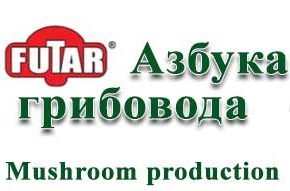Problems of oyster mushroom blocks development
Problems associated with the violation of substrate preparation technology.
1.The block has brown streaks from the perforations, there are spots with no mycelium growth, from excess water accumulation in the corners. A strange unpleasant smell may appear, sometimes there is a smell of ammonia.
This is due to the substrate overmoistening. Excessive moisture promotes the rapid spread of various bacterial infections and molds. With the accumulation of pathogenic microflora, after 11-13 days a white, overgrown block may start to become covered with yellow spots, and after 3-4 days may die completely.
- Blocks overgrow very quickly, they have a beautiful uniform white color and primordia proceed to fruition well. But then part of the primordia starts to dry, a large number of clusters fades in the early stages of development.
The second flush gives a very low yield or no yield at all. Such problems are observed when the substrate moisture is insufficient; fungi can not sufficiently absorb the nutrients due to lack of moisture. On the remains of the clusters, moisture begins to accumulate and a secondary bacterial infection develops, therefore they surprisingly look wet, not dry.
- Mold in the block – green ( trichoderma ) or black ( mucor ). If the block grows unevenly, a grayish-white plaque of mold mycelium may appear in the spots of non-growth, at first practically indistinguishable from the actual oyster mushroom mycelium. 3-5 days after the appearance, it forms spores and the stain gets green, olive or black – depending on the mold species
This happens due to the low pH of the substrate. The optimal pH is considered to be 7.5-8.5. It is achieved by applying lime during substrate preparation. Mycelium of oyster mushrooms develops well in this range, while mold prefers acidified substrates. Violation of the inoculation room sanitary regime and blocks inoculation also contributes to infection, due to the ingress of mold spores into the substrate from the air.
Sometimes the oyster mushroom block turns green completely at the early stages of incubation and eventually dies. Very rarely pink or orange mold (neurospora) appears in the bag.
As a rule, these two facts are associated with poor heat treatment of raw materials. Read here about hydrothermal regimes and here about tunnel pasteurization. Some mushroom growers like experimenting and as a result prepare the substrate improperly. For example, on the inoculation table, they mix in additives that did not undergo heat treatment (not calcinated): bran, chalk, gypsum. The supplements themselves in this case can be a source of trichodermal spores, and the block is first covered with small green spots, and then can completely go bad (due to the multiple spore growth).
At the enterprise it is necessary to develop strict technological regulations establishing the sequence of all technological operations, with the clear indication of temperature and time parameters. It should be obligatory to follow it. The lack of knowledge about the microbiological processes occurring during substrate preparation sometimes leads to ignoring the important components of this process or to its simplification (for example, nonobservance of temperature parameters, cutting the timing of some important stages, incorrectly selected cooling regimes during pasteurization).
It is necessary to record in a separate journal the changes in any regime parameters with an indication of date (batch number), for further situation analysis. Some problems of substrate overgrowth may be due to the fact that the equipment does not correspond selected regimes and can not ensure a proper implementation of this process.
If there are disturbances in the processing of plant material, the mushroom yield may be low, despite the high-quality mycelium and the properly planned microclimate in the growth chambers.
Problems associated with violations of climatic and sanitary incubation parameters.
- The appearance of green mold in the slots of blocks during the overgrowth
This is caused by the microbiological contamination of the premises where the blocks are located. It is necessary to unload the incubator and conduct a set of sanitary measures. How to deal with trichoderma and other molds – read here .
- Condensate under the film
Apart from waterlogged substrate condensation can occur due to the sudden changes in temperature of the room where the blocks are overgrowing.
It is dangerous because it can trigger the processes of bacteria and trichoderma spore reproduction in the subfilm layer. The presence of water in this layer disturbs gas exchange and mycelium hyphae can not germinate there. Unfortunately, in this case the whole block can be white, beautifully overgrown inside, but with no fruition.
- The surface of the bags under the film is covered with pronounced indurations in the form of white spots.
Most likely, in this case overheating occurred during overgrowth. In this regard, it is mandatory to control the temperature in the center of the block – it should not exceed 30ºC.
- Primordia forming and growing under the film, directly near the perforations or in the sub-film space, regardless of the perforation location.
The reason for this is low humidity (below 75%) in the room during the final incubation stages.
- Abnormal development of primordia, the presence of “cones”
Indicates temperature and humidity swings during incubation process.
Optimal conditions – temperature 20-22ºC, humidity – 65-70% before the fluffing of primordia, then – gradual increase to 85-90%.
- Fruit body changes in oyster mushrooms – thickening of the fungal tissue, the presence of rusty spots on the cap can provoke the development of insect parasites and others pests : fungus gnats, mites, larvae of mushroom flies. How to deal with them – read in this article.
Conclusion. The key to success in mushroom growing is the careful observance of the technological regulations of the enterprise. And the key components of this success are a qualitative sterile mycelium, properly selected technologies for mushroom bock raw materials processing (classical hydrothermal treatment for small enterprises and tunnel pasteurization for medium and large ones) and the availability of quality microclimate systems in the growing rooms.
